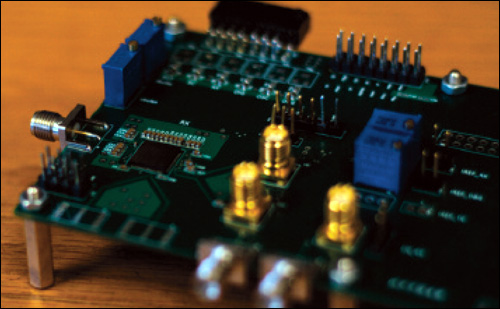Radio frequency identification is often seen as a way to take people out of the loop and allow objects to communicate directly with IT systems. Disney Research, a part of The Walt Disney Co. focused on scientific and technical innovation, has developed a low-cost, unobtrusive way to employ RFID to determine how people use and interact with daily objects. The system, IDSense, could enable new types of interactive play, smart homes and work environments, and methods for studying consumer shopping habits.
Alanson Sample, who worked at Intel Labs, where he explored RFID’s role in monitoring human-computer interactions, led the project. “When I joined Disney Research, I wanted to revisit RFID sensing and human-object interaction in a more scalable manner using off-the-shelf, passive ultrahigh-frequency RFID tags,” Sample says. “The latest generation of UHF RFID readers report tag channel parameters, such as received signal strength indicator [RSSI], radio frequency phase and Doppler shift. I realized these offer a unique snapshot of the RF environment of each individual tag. By monitoring changes in these tag parameters as a function of time, and using machine learning techniques, we are able to identify basic human-object interactions.”
RSSI is a measurement of signal power received by the reader antenna and is affected predominantly by the distance between the tag and the reader. RF phase—the angle between the carrier signal emitted by the RFID reader and the return signal from the tag—is sensitive to small changes in distance. The Doppler shift is a radio frequency shift caused by the speed of a moving object.
Using these parameters, Sample, his colleague Can Ye, and Hanchuan Li, a doctoral student in computer science and engineering at the University of Washington, were able to simultaneously track 20 objects in a room and infer four classes of movements with 93 percent accuracy. They could tell, for example, whether an object was still or being rotated or moved, or whether the tag on the object was covered, indicating the object was being held, or swiped with a finger.
The Disney team demonstrated how IDSense could enable an interactive storytelling game—rocking or petting RFID-tagged stuffed toys triggered actions by digital characters. In other demonstrations, the researchers used IDSense to monitor 10 commonly used household items—including a drinking glass, a milk container and a cereal box—to show how the system could be used to gather information about daily living activities, and how it could aid in studying the browsing behavior of consumers in a retail store.
Sample believes employing radio channel parameter information to infer how people use technology and interact with their environments has a wide range of potential applications. “There’s more than just object-interaction detection,” he says. “Understanding the state of an object or infrastructure in a battery-free, low-cost way is really interesting.”
Other possible applications include determining seat occupancy and improving security by monitoring the opening and closing of windows and doors. In a video on the Disney Research website, a man sitting on a couch turns on the lights by swiping the tag on a book. Sample says Disney is exploring ways to commercialize the IDSense system.


